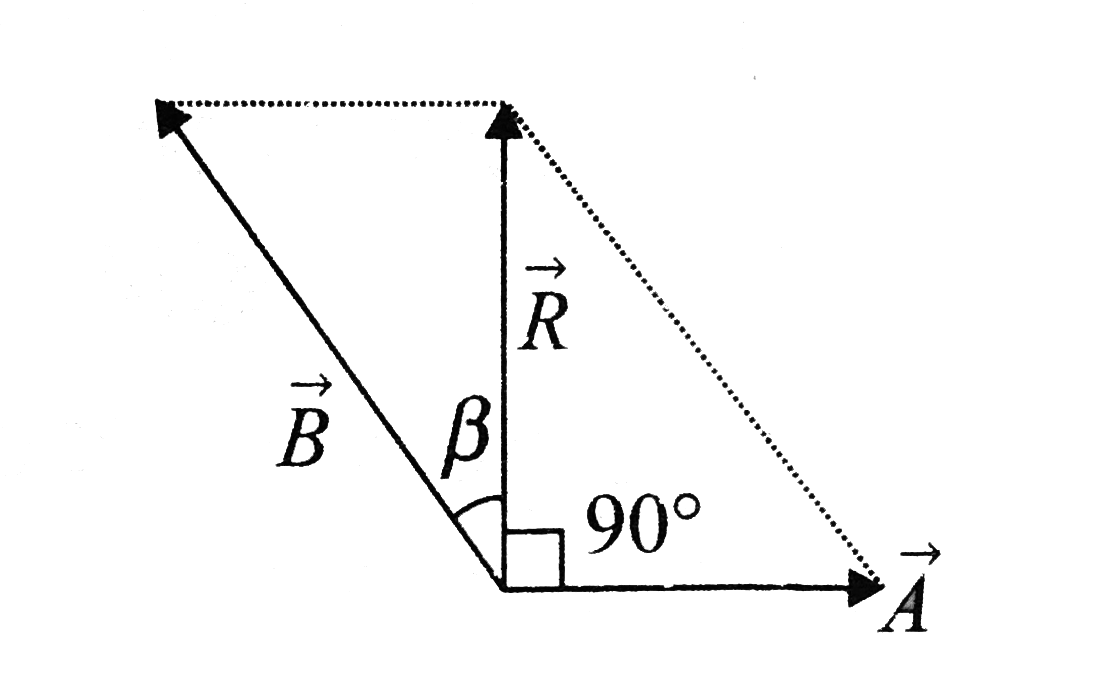The resultant of two vectors →A and →B is perpendicular to the vector →A and its magnitudes is equal to half of the magnitudes of vector →B (figure). The angle between →A and →B is

a. 120∘
b. 150∘
c. 135∘
d. None of these
The correct Answer is:B
cosβ=RB=12⇒β=60∘
Angle between →A and →B=90∘+β=150∘
Topper's Solved these Questions
- VECTORSBook:CENGAGE PHYSICS ENGLISHChapter:VECTORSExercise:Exercise Multiple Correct
Explore 5 Videos
- VECTORSBook:CENGAGE PHYSICS ENGLISHChapter:VECTORSExercise:Exercise Subjective
Explore 28 Videos
- TRAVELLING WAVESBook:CENGAGE PHYSICS ENGLISHChapter:TRAVELLING WAVESExercise:Integer
Explore 9 Videos
- WORK, POWER & ENERGYBook:CENGAGE PHYSICS ENGLISHChapter:WORK, POWER & ENERGYExercise:Archives (integer)
Explore 4 Videos
Similar Questions
Knowledge Check
The magnitude of the x-component of vector →A is 3 and the magnitude of vector →A is 5. What is the magnitude of the y-component of vector →A ?
A3B4C5D8
The resultant of two vectors →P and →Q is →R. If →Q is doubled then the new resultant vector is perpendicular to →P. Then magnitude of →R is :-
View Solutiona, b are the magnitudes of vectors →a & →b. If →a×→b=0 the value of →a.→b is
View SolutionTwo vectors →Aand→B lie in plane, another vector →C lies outside this plane, then the resultant of these three vectors i.e., →A+→B+→C
View SolutionThe resultant and dot product of two vectors →aand→b is equal to the magnitude of →a. Show that when the vector →a is doubled , the new resultant is perpendicular to →b .
View SolutionThe magnitudes of vectors →A,→Band→C are 3,4 and 5 unit respectively. If →A+→B=→C, the angle between →Aand→B is
View SolutionThe vector (→a+3→b) is perpendicular to (7→a−5→b) and (→a−4→b) is perpendicular to (7→a−2→b). The angle between →a and →b is :
View SolutionThe magnitude of vector →A,→B and →C are respectively 12,5 and 13 unit and →A+→B=→C then the angle between →A and →B is
View Solution